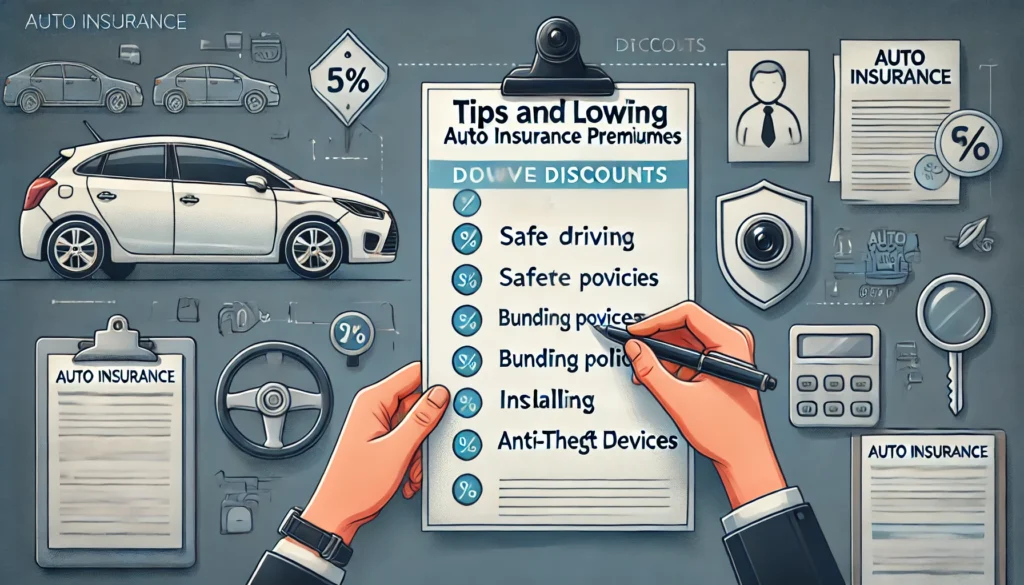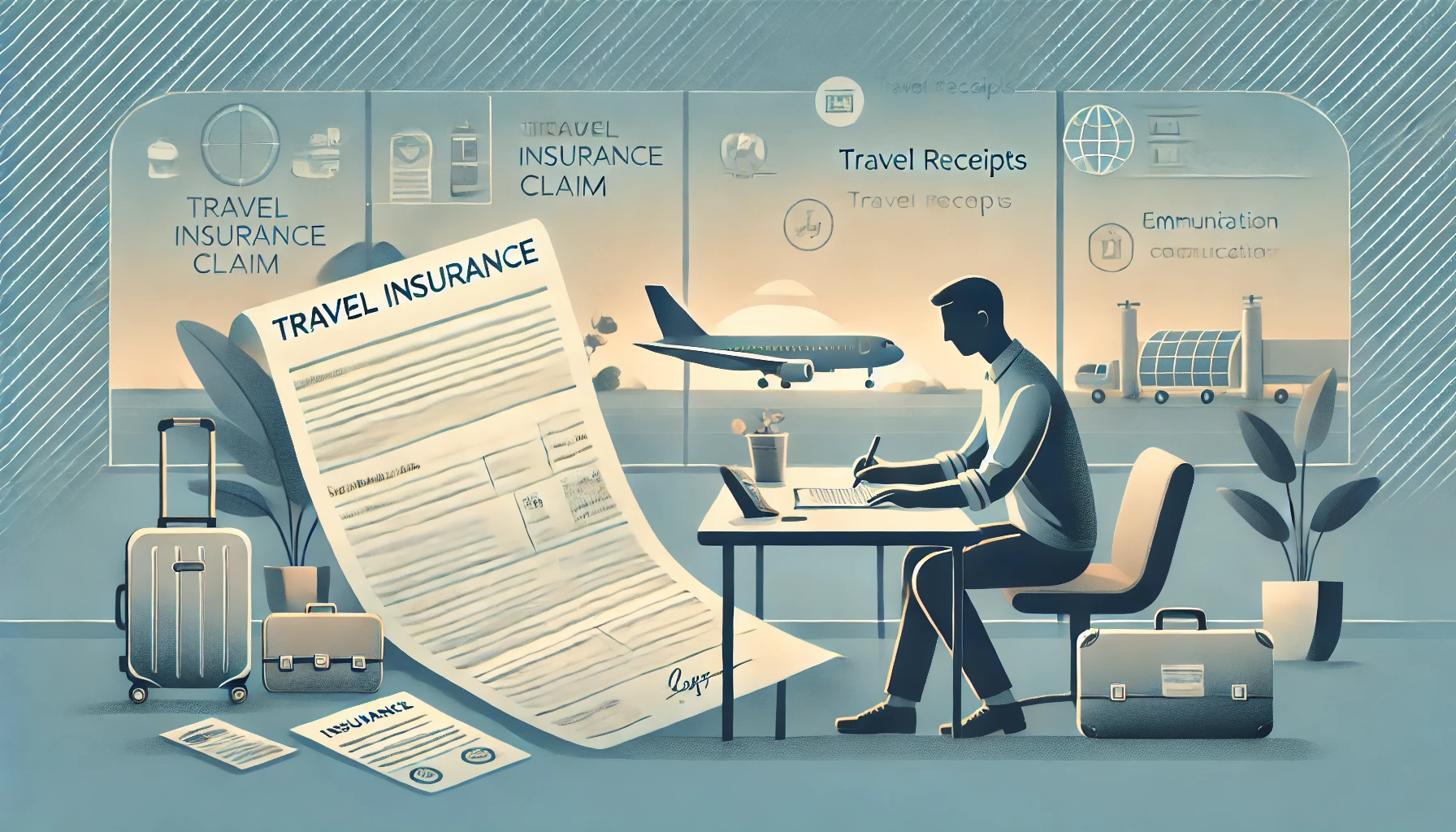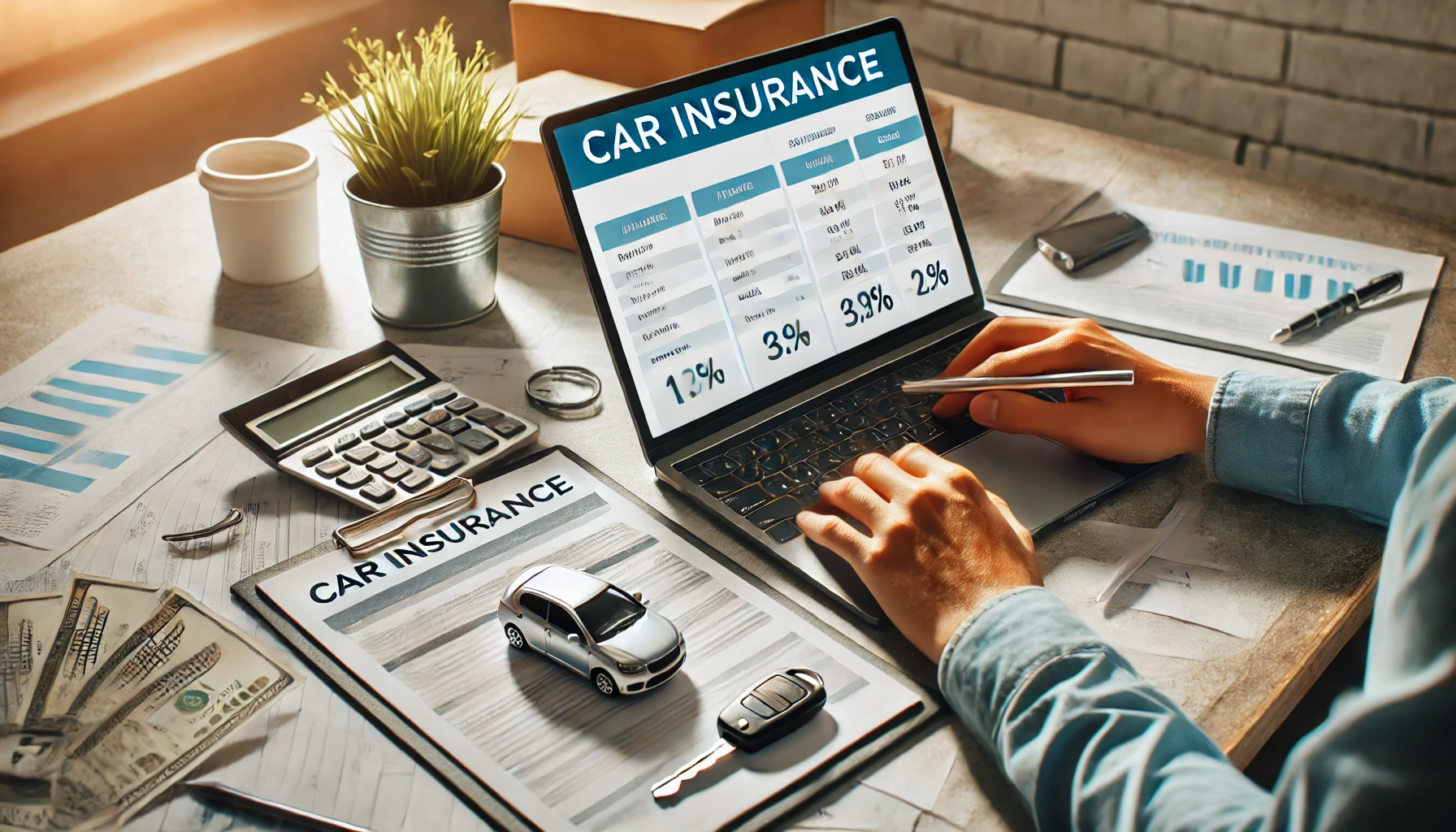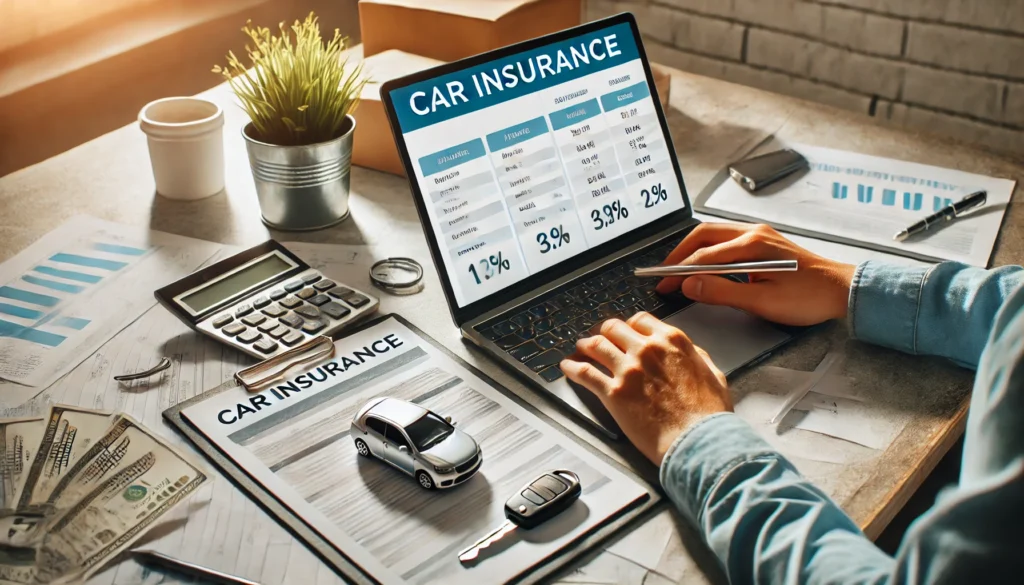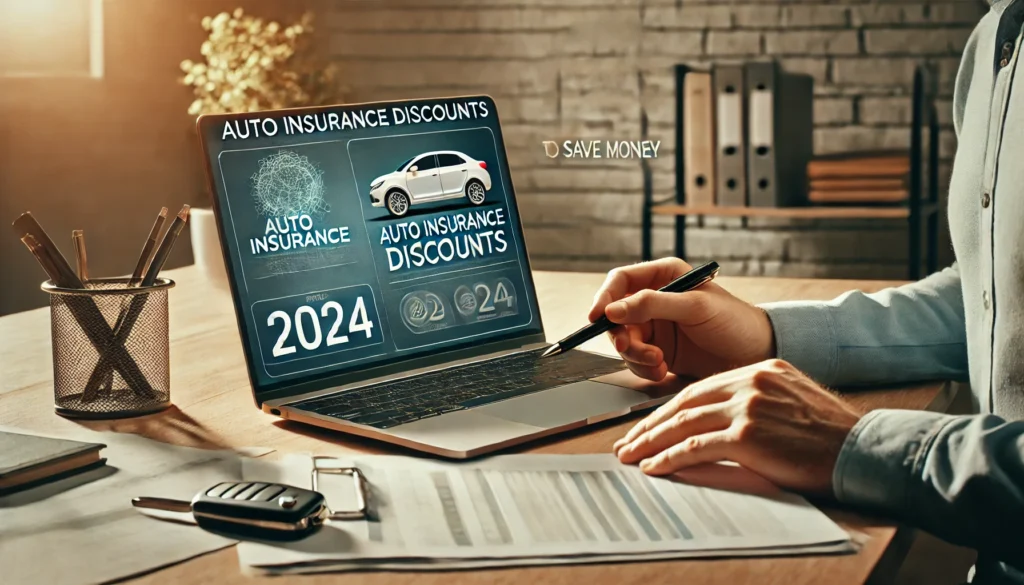Auto insurance is a necessity for every driver, but paying high premiums can be a burden on your finances. Fortunately, there are numerous strategies you can employ to lower your auto insurance premiums without compromising the coverage you need. From shopping around for better rates to making changes to your driving habits, this comprehensive guide will walk you through various tips and tricks to help you reduce your auto insurance costs effectively.
Table of Contents:
- Understanding How Auto Insurance Premiums Are Calculated
- Shop Around and Compare Quotes from Multiple Insurers
- Raise Your Deductible to Lower Premiums
- Maintain a Clean Driving Record
- Bundle Auto Insurance with Other Policies
- Take Advantage of Discounts
- Drive Less and Use Mileage-Based Insurance
- Improve Your Credit Score
- Choose a Car with Lower Insurance Rates
- Opt for Usage-Based or Pay-Per-Mile Insurance
- Review and Adjust Your Coverage Regularly
- Avoid Making Small Claims
- Consider Dropping Comprehensive and Collision Coverage for Older Cars
- Pay Your Premium in Full
- Install Safety and Anti-Theft Devices
- Review Your Policy for Unnecessary Add-ons
- Conclusion
1. Understanding How Auto Insurance Premiums Are Calculated
Before diving into tips to lower your premiums, it’s essential to understand how auto insurance premiums are calculated. Insurers assess several factors when determining how much to charge for coverage. These factors generally fall into four categories: your personal characteristics, your vehicle, your driving habits, and your location.
#1. What type of job are you looking for?
#2. What is your work experience level?
#3. What is your English level?
#4. Where are you willing to work?
#5. When can you start?
Key Factors that Influence Auto Insurance Premiums:
- Age, Gender, and Marital Status: Younger drivers, especially males, tend to pay higher premiums due to their perceived higher risk of accidents. Married drivers, however, often pay less.
- Driving History: A clean driving record with no accidents or violations will help lower your premiums, while at-fault accidents, traffic violations, or DUIs will increase your costs.
- Credit Score: In many regions, your credit score is used to determine your risk level. A higher credit score can lead to lower premiums.
- Vehicle Make and Model: Cars with higher safety ratings, lower theft rates, and less powerful engines usually come with lower insurance premiums.
- Location: Urban areas with higher crime rates or more accidents tend to have higher premiums than rural areas.
- Annual Mileage: The more you drive, the higher your premiums may be, as increased mileage raises the risk of accidents.
Understanding these factors will allow you to focus on the areas where you can make changes to lower your premiums.
2. Shop Around and Compare Quotes from Multiple Insurers
One of the most effective ways to lower your auto insurance premiums is to shop around and compare quotes from multiple insurance providers. Insurance companies use different formulas to calculate premiums, which means that the same driver could receive vastly different rates from different companies.
How to Shop Around Effectively:
- Get multiple quotes: Reach out to at least three or four insurance companies and request quotes for the same level of coverage. Online comparison tools make it easy to compare rates side-by-side.
- Compare similar coverage: Ensure that the quotes you’re comparing offer the same coverage limits and deductibles. If one company offers a lower rate but provides less coverage, the savings may not be worth it.
- Ask about discounts: Different companies offer different discounts. Be sure to ask about any discounts you may qualify for, and factor these into your comparison.
By taking the time to shop around, you can often find a better deal, saving hundreds of dollars annually on your auto insurance premiums.
3. Raise Your Deductible to Lower Premiums
A deductible is the amount you must pay out of pocket before your insurance coverage kicks in after an accident. One of the simplest ways to lower your auto insurance premiums is to raise your deductible. The higher the deductible, the lower your monthly or annual premium.
Key Considerations for Raising Your Deductible:
- Balance savings with risk: While a higher deductible can save you money on your premium, it also means you’ll need to pay more out of pocket in the event of an accident. Make sure you can comfortably afford the higher deductible if you need to file a claim.
- Common deductible amounts: Deductibles typically range from $250 to $1,000 or more. Raising your deductible from $250 to $500 or $1,000 can reduce your premium by 10% to 20%.
- Avoid frequent claims: If you raise your deductible, it’s important to avoid making small claims that would require you to pay the higher amount. Save your insurance for major incidents.
By opting for a higher deductible, you assume more financial responsibility in case of an accident, but the premium savings can be significant.
4. Maintain a Clean Driving Record
Your driving record is one of the most important factors insurance companies consider when determining your premium. A clean driving record indicates that you’re a low-risk driver, which can significantly reduce your insurance costs. On the other hand, accidents, speeding tickets, and other violations can cause your premiums to spike.
How to Keep Your Driving Record Clean:
- Obey traffic laws: Follow speed limits, avoid reckless driving, and adhere to all traffic signals and signs.
- Avoid distractions: Distracted driving, especially texting while driving, increases the risk of accidents. Always keep your attention on the road.
- Take a defensive driving course: Some insurance companies offer discounts to drivers who complete an approved defensive driving course. This not only improves your driving skills but can also help you lower your premiums.
- Drive cautiously in poor weather: Accidents are more likely to occur in rainy, snowy, or foggy conditions. Reduce your speed and increase following distances during adverse weather conditions.
Maintaining a clean driving record over time will help you qualify for the best possible rates, as many insurers offer “good driver” discounts for those without accidents or violations.
5. Bundle Auto Insurance with Other Policies
Another way to save money on your auto insurance is to bundle your policies with the same provider. Many insurance companies offer multi-policy discounts when you purchase auto insurance along with homeowners, renters, or life insurance.
Benefits of Bundling Insurance Policies:
- Multi-policy discounts: Bundling can result in discounts of 10% to 25%, depending on the insurer.
- Simplified billing: Having multiple policies with the same provider makes managing your insurance easier since you’ll receive one bill for all your coverage.
- Potential for additional discounts: Some insurers offer additional perks, such as loyalty discounts, for customers who have multiple policies with them.
Before bundling, compare the cost of buying separate policies versus bundled policies to ensure you’re getting the best deal overall.
6. Take Advantage of Discounts
Many insurance companies offer a variety of discounts that can help you lower your premiums. However, not all discounts are advertised, so it’s essential to ask your insurer about any potential savings you may be eligible for.
Common Auto Insurance Discounts Include:
- Good driver discount: Drivers with a clean driving record, free of accidents or violations, often qualify for a discount.
- Good student discount: Many insurers offer discounts to young drivers who maintain good grades in school, typically a B average or higher.
- Multi-car discount: If you insure more than one vehicle with the same company, you may qualify for a multi-car discount.
- Safety features discount: Vehicles equipped with safety features like anti-lock brakes, airbags, and stability control may qualify for lower premiums.
- Anti-theft device discount: Installing an anti-theft device, such as an alarm or a GPS tracking system, can lower the risk of theft and reduce your premiums.
- Low-mileage discount: If you drive less than the average number of miles per year, you may be eligible for a low-mileage discount.
- Military or professional discounts: Some insurers offer discounts for military personnel, first responders, or members of certain professional organizations.
Be proactive and ask your insurance provider about all available discounts. You might be surprised at how much you can save.
7. Drive Less and Use Mileage-Based Insurance
The more you drive, the higher your risk of being involved in an accident, which is why insurers factor your annual mileage into your premium. If you drive less than the average person, you may qualify for a low-mileage discount or even consider switching to a usage-based insurance plan.
Ways to Reduce Your Annual Mileage:
- Carpool or use public transportation: Reducing your driving by carpooling or using public transportation can help you qualify for low-mileage discounts.
- Work from home: If you have the flexibility to work from home, you’ll likely drive fewer miles, which can lower your insurance premium.
- Combine errands into one trip: Planning your trips efficiently to reduce the number of miles you drive can also lead to premium savings.
Usage-based insurance, or pay-per-mile insurance, is an excellent option for low-mileage drivers. These policies use telematics devices or apps to track your driving habits and mileage, and your premium is adjusted based on the data collected.
8. Improve Your Credit Score
In many states, insurance companies use your credit score as a factor when determining your auto insurance premium. A higher credit score indicates financial responsibility, which can lower your insurance rates.
How to Improve and Maintain a Good Credit Score:
- Pay bills on time: Consistently paying your bills (credit cards, loans, utilities) on time is one of the most important factors in maintaining a good credit score.
- Keep credit card balances low: Aim to use no more than 30% of your available credit limit to avoid negatively impacting your score.
- Don’t open unnecessary credit accounts: Each time you apply for credit, a hard inquiry is placed on your credit report, which can temporarily lower your score.
- Review your credit report: Regularly check your credit report for errors or fraudulent activity, and dispute any inaccuracies.
Improving your credit score takes time, but the long-term benefits can extend beyond lower insurance premiums to better loan and credit card rates as well.
9. Choose a Car with Lower Insurance Rates
The type of car you drive has a significant impact on your auto insurance premium. Insurance companies consider factors such as the vehicle’s safety rating, cost to repair or replace, likelihood of being stolen, and performance when determining the cost to insure it.
How to Choose a Car with Lower Insurance Costs:
- Opt for vehicles with high safety ratings: Cars with top safety features and crash test ratings are less expensive to insure because they’re less likely to be involved in serious accidents.
- Avoid luxury or high-performance cars: Sports cars, luxury vehicles, and high-performance cars generally come with higher insurance premiums due to the higher cost of repairs and replacement.
- Research theft rates: Some vehicles are more prone to theft, which can increase insurance premiums. Check vehicle theft rates before purchasing a car.
- Consider hybrid or electric cars: Some insurers offer discounts for eco-friendly vehicles like hybrids and electric cars.
Before purchasing a new vehicle, it’s worth researching the insurance costs associated with different models to ensure you’re not hit with unexpectedly high premiums.
10. Opt for Usage-Based or Pay-Per-Mile Insurance
If you don’t drive frequently or only use your car for short trips, usage-based or pay-per-mile insurance could help lower your premiums. These types of policies monitor your driving habits and mileage and adjust your premium based on how much and how safely you drive.
How Usage-Based Insurance Works:
- Telematics devices or apps: Insurers may provide you with a telematics device to install in your car or an app to download on your phone, which tracks your driving behavior, including speed, braking, and mileage.
- Pay for what you use: The less you drive, the lower your premium. Some usage-based insurance programs also reward safe driving habits with discounts.
- Customized rates: Your premium is tailored to your specific driving habits, which can result in significant savings if you’re a low-mileage, safe driver.
This type of insurance is ideal for drivers who don’t commute long distances, those who work from home, or people who primarily use public transportation.
11. Review and Adjust Your Coverage Regularly
As your life circumstances change, your auto insurance needs may evolve. Regularly reviewing and adjusting your coverage ensures that you’re not paying for more coverage than you need.
When to Review Your Coverage:
- After significant life changes: If you’ve moved to a new location, changed jobs, or added a new driver to your policy, it’s essential to review your coverage to make sure it’s still appropriate.
- Every year: Even if nothing major has changed, it’s a good idea to review your policy annually to ensure you’re getting the best deal and to update any outdated information.
- After purchasing a new vehicle: New cars often require more comprehensive coverage than older vehicles. Review your policy to make sure you have the appropriate level of coverage.
By reviewing your policy regularly, you can identify any areas where you may be able to reduce your premiums.
12. Avoid Making Small Claims
Filing frequent claims can cause your insurance premium to rise, as insurance companies may consider you a higher risk if you’ve filed multiple claims. To keep your premiums low, it’s often better to pay for minor repairs out of pocket instead of filing a claim.
When to Avoid Filing a Claim:
- Minor repairs: If the cost to repair your car is only slightly above your deductible, it may make more sense to pay for the repairs yourself rather than filing a claim.
- Accidents caused by you: Filing a claim for an at-fault accident can result in a significant premium increase, so it’s worth considering paying for the damages out of pocket if the costs are manageable.
- Consider the long-term impact: Filing multiple claims within a short period can result in higher premiums or even lead to non-renewal of your policy. Save your insurance for significant accidents or costly repairs.
By reserving your insurance for major incidents, you can avoid premium increases and keep your coverage affordable.
13. Consider Dropping Comprehensive and Collision Coverage for Older Cars
If your car is older and has a low market value, you may want to consider dropping comprehensive and collision coverage. These coverages pay for damage to your vehicle in the event of an accident or other incidents like theft, vandalism, or natural disasters. However, for older vehicles, the cost of these coverages may outweigh the potential payout in the event of a claim.
When to Drop Comprehensive and Collision Coverage:
- Low vehicle value: If your car’s market value is less than 10 times the cost of your comprehensive and collision coverage premiums, it may not be worth keeping these coverages.
- Age of the vehicle: As a car ages, its value depreciates, which means the potential payout from an insurance claim may not justify the cost of maintaining full coverage.
- Consider liability-only coverage: If you drop comprehensive and collision coverage, you’ll still need to maintain liability coverage to meet state requirements, but this can significantly lower your premiums.
By adjusting your coverage to match the current value of your vehicle, you can avoid overpaying for insurance you may not need.
14. Pay Your Premium in Full
While most insurance companies allow you to pay your premium in monthly installments, there’s often a processing fee associated with monthly payments. Paying your premium in full for the entire policy term (typically six months or one year) can save you money by eliminating these fees and sometimes even earning you a discount.
Benefits of Paying Your Premium in Full:
- Avoid installment fees: Many insurers charge a small fee for paying your premium in monthly installments. These fees can add up over time.
- Discount for full payment: Some insurance companies offer a discount for paying the full premium upfront, typically ranging from 5% to 10%.
- Simplified billing: Paying your premium in full eliminates the need to worry about monthly payments, making it easier to manage your finances.
If you’re able to pay your premium in full, you can save money and avoid the hassle of monthly billing.
15. Install Safety and Anti-Theft Devices
Installing safety features and anti-theft devices in your vehicle can lower your insurance premiums by reducing the risk of accidents and theft. Insurance companies often offer discounts for vehicles equipped with these features because they’re less likely to be involved in accidents or stolen.
Common Safety and Anti-Theft Features that Qualify for Discounts:
- Anti-lock brakes: Vehicles with anti-lock braking systems (ABS) are less likely to be involved in accidents, resulting in lower premiums.
- Airbags: Cars equipped with multiple airbags, including side-impact and curtain airbags, may qualify for safety-related discounts.
- Electronic stability control: This feature helps prevent skidding and loss of control, particularly in wet or icy conditions, and may qualify you for a discount.
- GPS tracking systems: Anti-theft devices like LoJack or other GPS-based tracking systems can make it easier to recover a stolen vehicle, which may lower your insurance premium.
- Alarm systems: Installing a car alarm can deter thieves and reduce the risk of theft, often resulting in lower premiums.
By adding these safety and anti-theft devices to your vehicle, you can reduce your risk profile and potentially lower your insurance costs.
16. Review Your Policy for Unnecessary Add-ons
When purchasing auto insurance, it’s easy to get carried away with additional coverage options, but some of these add-ons may not be necessary for your situation. By reviewing your policy and eliminating unnecessary extras, you can lower your premium.
Common Add-ons to Consider Removing:
- Roadside assistance: If you already have roadside assistance through an auto club or your vehicle manufacturer, you may not need to pay for it through your insurance policy.
- Rental car reimbursement: This coverage pays for a rental car if your vehicle is being repaired after an accident. If you have access to another car or don’t mind covering the cost of a rental out of pocket, you may not need this coverage.
- Personal injury protection (PIP): In some states, PIP is required, but if you have excellent health insurance, you may not need extensive PIP coverage.
By eliminating unnecessary add-ons, you can reduce your premium without sacrificing essential coverage.
17. Conclusion
Lowering your auto insurance premiums requires a strategic approach, but with the right tips and tricks, it’s possible to save money without compromising your coverage. From shopping around for better rates to maintaining a clean driving record, taking advantage of discounts, and adjusting your coverage to suit your needs, there are plenty of ways to reduce your premiums.
By regularly reviewing your policy, making informed decisions about your coverage, and adopting safe driving habits, you can keep your auto insurance costs low while still protecting yourself on the road.

